-
 Bitcoin
Bitcoin $118400
0.39% -
 Ethereum
Ethereum $3814
2.17% -
 XRP
XRP $3.547
1.34% -
 Tether USDt
Tether USDt $1.000
0.00% -
 BNB
BNB $769.5
2.95% -
 Solana
Solana $191.7
6.36% -
 USDC
USDC $0.9999
0.01% -
 Dogecoin
Dogecoin $0.2722
7.75% -
 Cardano
Cardano $0.8995
5.59% -
 TRON
TRON $0.3158
-0.78% -
 Hyperliquid
Hyperliquid $47.37
4.46% -
 Stellar
Stellar $0.4848
3.54% -
 Sui
Sui $4.031
1.72% -
 Chainlink
Chainlink $20.11
3.94% -
 Hedera
Hedera $0.2832
3.16% -
 Avalanche
Avalanche $26.20
4.27% -
 Bitcoin Cash
Bitcoin Cash $530.5
0.67% -
 Shiba Inu
Shiba Inu $0.00001568
3.59% -
 Litecoin
Litecoin $118.4
1.42% -
 UNUS SED LEO
UNUS SED LEO $8.976
-0.23% -
 Toncoin
Toncoin $3.349
2.54% -
 Polkadot
Polkadot $4.590
2.54% -
 Uniswap
Uniswap $10.56
-0.59% -
 Ethena USDe
Ethena USDe $1.001
0.00% -
 Monero
Monero $327.7
0.39% -
 Pepe
Pepe $0.00001422
2.62% -
 Bitget Token
Bitget Token $4.973
-1.22% -
 Dai
Dai $1.000
0.02% -
 Aave
Aave $331.9
1.59% -
 Bittensor
Bittensor $429.6
-0.56%
What is the purpose of blockchain?
Blockchain is a decentralized digital ledger that records transactions securely and transparently across a network of computers, ensuring data integrity and trust without the need for intermediaries.
Jul 21, 2025 at 06:29 pm
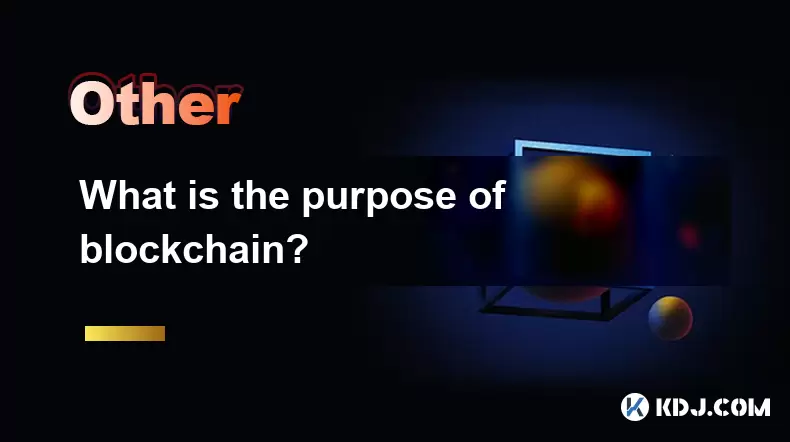
Understanding the Core Function of Blockchain
Blockchain technology is often associated with cryptocurrencies like Bitcoin and Ethereum, but its purpose extends beyond digital currencies. At its core, blockchain serves as a decentralized digital ledger that records transactions across a network of computers. This structure ensures that once data is recorded, it becomes extremely difficult to alter or tamper with, making the system highly secure and transparent.
The primary goal of blockchain is to eliminate the need for a central authority by allowing peer-to-peer transactions. In traditional financial systems, banks or governments act as intermediaries. Blockchain removes this middle layer, enabling direct interactions between parties. This decentralization not only reduces costs but also enhances trust among participants.
How Blockchain Ensures Transparency and Immutability
One of the key features of blockchain is transparency, which is achieved through a distributed ledger system. Every transaction is recorded and visible to all participants in the network. This visibility does not compromise privacy, as users can remain anonymous through cryptographic keys.
Immutability is another critical aspect of blockchain. Once a block of transactions is added to the chain, it cannot be altered without consensus from the majority of the network. This is ensured through cryptographic hashing and timestamping. Each block contains a unique hash of the previous block, creating a secure and unbreakable chain of data.
Use Cases Beyond Cryptocurrency
While blockchain is the underlying technology for most cryptocurrencies, its applications are not limited to finance. Blockchain is being used in supply chain management to track the origin and movement of goods. This ensures authenticity and reduces fraud.
In healthcare, blockchain can securely store and share patient records across institutions without compromising privacy. Patients can control who has access to their data, and doctors can retrieve accurate medical histories instantly.
Smart contracts are another innovation enabled by blockchain. These are self-executing contracts with the terms directly written into code. They automatically enforce and execute agreements when conditions are met, reducing the need for intermediaries.
Security and Decentralization in Blockchain Networks
Security is a major concern in any digital system, and blockchain addresses this through decentralization and cryptographic techniques. Unlike centralized systems where a single point of failure can lead to massive breaches, blockchain distributes data across a network of nodes.
Each node stores a copy of the entire blockchain, ensuring redundancy and resilience. If one node fails or is compromised, the network remains intact. Consensus mechanisms like Proof of Work (PoW) and Proof of Stake (PoS) validate transactions and prevent malicious activities.
Cryptography plays a vital role in securing data. Public and private keys allow users to send and receive information securely. Digital signatures ensure that only the rightful owner can initiate a transaction, and hashing protects data integrity.
Implementing Blockchain: A Step-by-Step Guide
For those interested in building or deploying a blockchain solution, the process involves several steps:
Define the Use Case: Determine the specific problem you're trying to solve with blockchain. Is it transparency, security, or automation through smart contracts?
Choose the Right Consensus Mechanism: Decide whether to use PoW, PoS, or another consensus algorithm based on your project's needs. Each mechanism has trade-offs in terms of speed, energy consumption, and security.
Select a Blockchain Platform: Popular platforms include Ethereum for smart contracts, Hyperledger Fabric for enterprise solutions, and Corda for financial services. Each platform has different features and development tools.
Design the Architecture: Plan the structure of your blockchain network, including nodes, APIs, and user interfaces. Decide whether it will be a public, private, or consortium blockchain.
Develop Smart Contracts: If your application requires automation, write and test smart contracts using languages like Solidity or Vyper. Ensure that the code is secure and free from vulnerabilities.
Deploy and Monitor: Launch the network and continuously monitor its performance. Use analytics tools to track transaction speed, network health, and security threats.
Challenges and Limitations of Blockchain
Despite its many benefits, blockchain is not without challenges. Scalability remains a major issue, especially for public blockchains like Bitcoin and Ethereum. As more users join the network, transaction speeds can slow down, and fees can increase.
Regulatory uncertainty is another obstacle. Governments are still figuring out how to regulate blockchain and cryptocurrencies. Compliance with local laws can be complex, especially for cross-border transactions.
Energy consumption is also a concern, particularly for blockchains that use PoW. Mining requires significant computational power, leading to high electricity usage. Some networks are transitioning to more energy-efficient models like PoS.
Interoperability between different blockchain networks is still limited. There is no universal standard for how blockchains communicate with each other, which can create siloed systems and hinder widespread adoption.
Frequently Asked Questions
Q: Can blockchain be used without cryptocurrency?
Yes, blockchain can be used independently of cryptocurrency. Many enterprise and government applications utilize blockchain for data integrity, supply chain tracking, and digital identity without involving any cryptocurrency.
Q: How does blockchain ensure data privacy?
Blockchain ensures data privacy through cryptographic techniques. While transactions are transparent, personal identities are protected using public and private keys. Private blockchains can also restrict access to authorized participants only.
Q: Are all blockchains public?
No, there are different types of blockchains: public, private, and consortium. Public blockchains are open to anyone, while private and consortium blockchains restrict access to certain entities.
Q: How do smart contracts work on a blockchain?
Smart contracts are self-executing agreements written in code. They automatically execute when predefined conditions are met. They run on a blockchain, ensuring transparency, security, and elimination of intermediaries.
Disclaimer:info@kdj.com
The information provided is not trading advice. kdj.com does not assume any responsibility for any investments made based on the information provided in this article. Cryptocurrencies are highly volatile and it is highly recommended that you invest with caution after thorough research!
If you believe that the content used on this website infringes your copyright, please contact us immediately (info@kdj.com) and we will delete it promptly.
- Toshi.bet: Leading the Crypto Casino Revolution in Poland 2025
- 2025-07-21 20:30:12
- Tether Gold (XAU₮) Expands: Mobee Indonesia & Tokenized Gold's Rising Tide
- 2025-07-21 20:50:12
- BlockDAG's Launch Access: No Vesting, Maximum Opportunity!
- 2025-07-21 21:30:12
- Altcoin Season Heats Up: Cardano Outperforms After Bitcoin Stabilizes
- 2025-07-21 20:50:12
- BlockchainFX: The 1000X Potential Crypto SHIB and DOGE Holders Are Eyeing
- 2025-07-21 21:30:12
- Delhi High Court and the Curious Case of the Missing ₹50 Coin
- 2025-07-21 21:35:13
Related knowledge
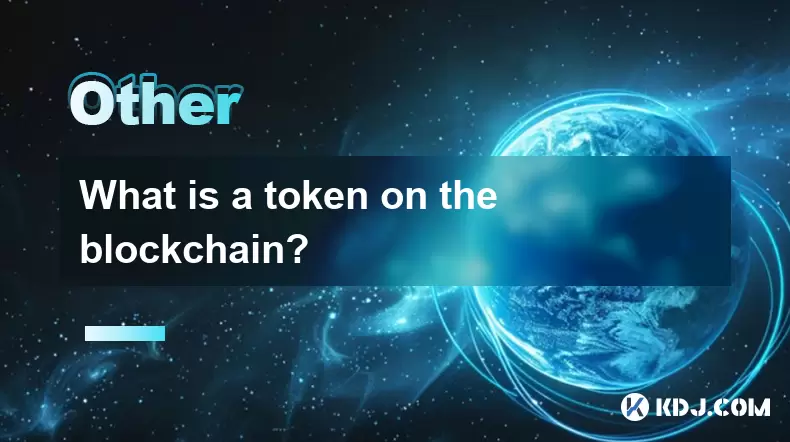
What is a token on the blockchain?
Jul 21,2025 at 07:00am
Understanding the Concept of a TokenIn the realm of blockchain technology, a token is a digital representation of an asset or utility that exists on a...
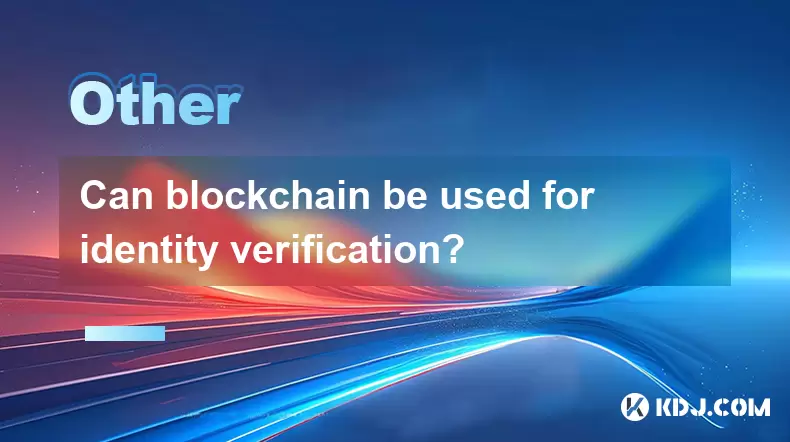
Can blockchain be used for identity verification?
Jul 18,2025 at 02:14pm
Understanding Identity Verification in the Digital AgeIn the modern digital landscape, identity verification has become a critical component for ensur...
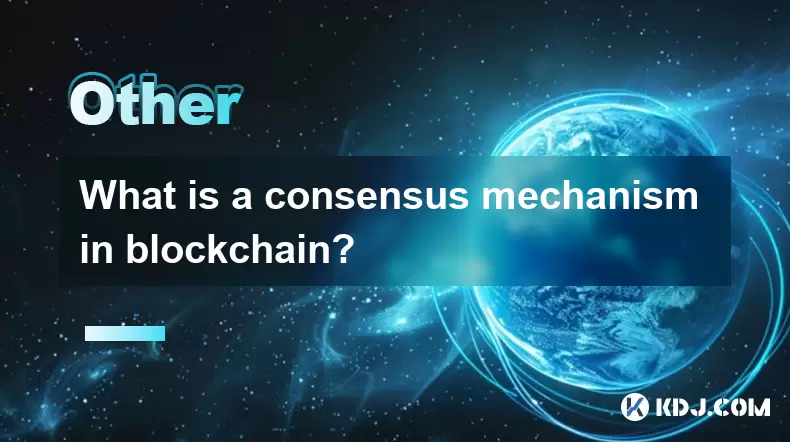
What is a consensus mechanism in blockchain?
Jul 21,2025 at 03:01am
Understanding the Basics of Consensus MechanismsA consensus mechanism is a critical component of any blockchain network. It refers to the process by w...
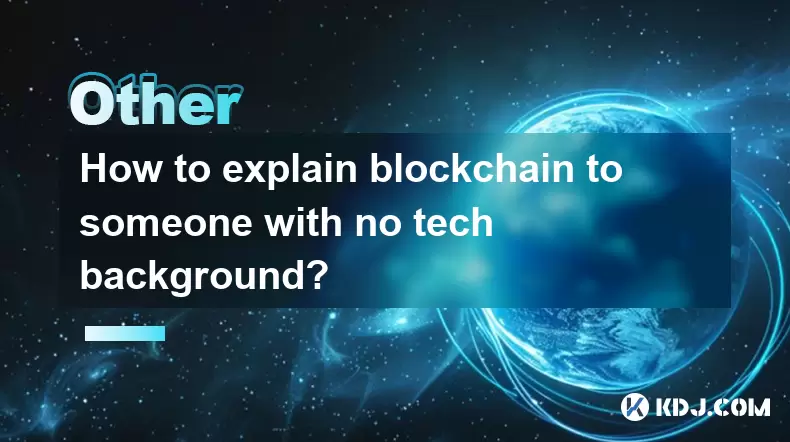
How to explain blockchain to someone with no tech background?
Jul 18,2025 at 11:08pm
Understanding the Basics of BlockchainTo explain blockchain to someone with no tech background, it's essential to start with simple analogies and avoi...
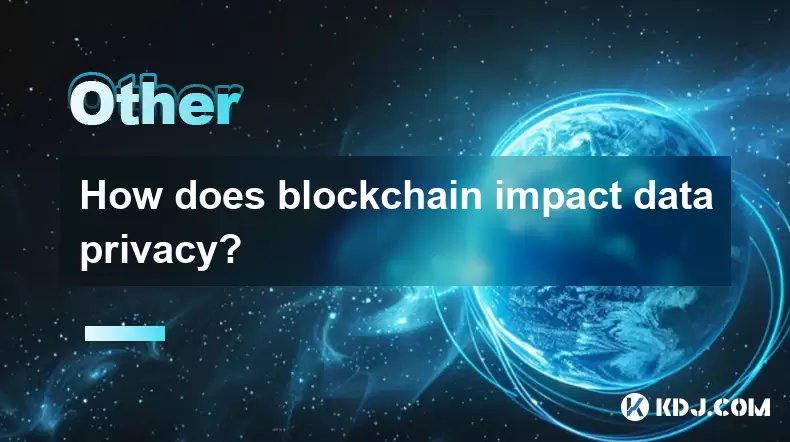
How does blockchain impact data privacy?
Jul 21,2025 at 02:21pm
Understanding the Role of Blockchain in Data PrivacyBlockchain technology, originally developed as the underlying infrastructure for cryptocurrencies ...
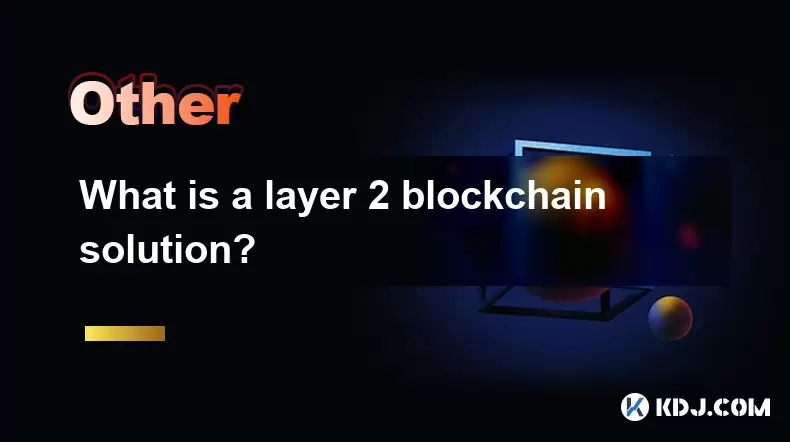
What is a layer 2 blockchain solution?
Jul 20,2025 at 01:42am
Understanding the Concept of Layer 2 BlockchainA layer 2 blockchain solution refers to a secondary framework or protocol built on top of an existing b...

What is a token on the blockchain?
Jul 21,2025 at 07:00am
Understanding the Concept of a TokenIn the realm of blockchain technology, a token is a digital representation of an asset or utility that exists on a...

Can blockchain be used for identity verification?
Jul 18,2025 at 02:14pm
Understanding Identity Verification in the Digital AgeIn the modern digital landscape, identity verification has become a critical component for ensur...

What is a consensus mechanism in blockchain?
Jul 21,2025 at 03:01am
Understanding the Basics of Consensus MechanismsA consensus mechanism is a critical component of any blockchain network. It refers to the process by w...

How to explain blockchain to someone with no tech background?
Jul 18,2025 at 11:08pm
Understanding the Basics of BlockchainTo explain blockchain to someone with no tech background, it's essential to start with simple analogies and avoi...

How does blockchain impact data privacy?
Jul 21,2025 at 02:21pm
Understanding the Role of Blockchain in Data PrivacyBlockchain technology, originally developed as the underlying infrastructure for cryptocurrencies ...

What is a layer 2 blockchain solution?
Jul 20,2025 at 01:42am
Understanding the Concept of Layer 2 BlockchainA layer 2 blockchain solution refers to a secondary framework or protocol built on top of an existing b...
See all articles

























































































